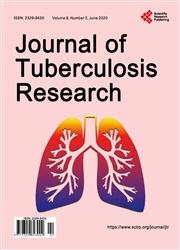Threefold Increase in the Number of Drug Resistant TB Cases after Introduction of Universal Drug Susceptibility Testing: Experiences from Two South India Districts
引用次数: 2
Abstract
Background: In India, tuberculosis (TB) is a major public health problem, and the advent of drug resistance TB (DR-TB) has worsened the situation. The Revised National TB Control Programme (RNTCP) has introduced universal drug susceptibility testing (UDST) for all diagnosed TB cases in 2018. We conducted this study to know the advantage of implementing UDST when compared to selective testing existent in 2017 on key diagnostic cascade parameters and to identify the challenges in the implementation of UDST. Methods: The study was conducted in two districts of Karnataka, India during January 2017-December 2018. The quantitative part consisted of before-and-after design and the qualitative part consisted of descriptive design. Results: In 2017 (during selective testing/“before” period) out of the 2440 TB patients, 80 (3%) were diagnosed with Isoniazid and Rifampicin resistance patients; in contrast in 2018 (during UDST/“after” period) of the 5129 TB patients 258 (5%) were diagnosed with Isoniazid and Rifampicin resistance. However, the proportion of eligible patients tested for rifampicin resistance during the “after” period was 60% when compared to 100% during the “before” period and median turnaround time for testing was also longer during the “after” period when compared to the “before” period (32.5 days vs 27.5 days). Major reasons for these two gaps were found to be difficulties in collecting sputum specimens and transportation. Conclusion: The rollout of UDST has led to a three-fold increase in a number of DR-TB cases detected in the region. There is a need for the programme to increase the proportion tested for DST by increasing the laboratory capacity and address the challenges in sputum collection and transportation.引入普遍药敏试验后耐药结核病病例增加了三倍:来自印度南部两个地区的经验
背景:在印度,结核病是一个主要的公共卫生问题,耐药结核病的出现使情况更加恶化。修订后的国家结核病控制计划(RNTCP)在2018年对所有确诊的结核病病例引入了通用药物敏感性测试(UDST)。我们进行这项研究是为了了解与2017年对关键诊断级联参数进行选择性测试相比,实施UDST的优势,并确定实施UDST面临的挑战。方法:该研究于2017年1月至2018年12月在印度卡纳塔克邦的两个地区进行。定量部分由前后设计组成,定性部分由描述性设计组成。结果:2017年(在选择性检测期间/“之前”期间),在2440名结核病患者中,80名(3%)被诊断为异烟肼和利福平耐药性患者;相比之下,2018年(在UDST/“之后”期间),5129名结核病患者中有258人(5%)被诊断为异烟肼和利福平耐药性。然而,与“之前”期间的100%相比,“之后”期间接受利福平耐药性检测的合格患者比例为60%,与“以前”期间相比,“以后”期间的中位检测周转时间也更长(32.5天vs 27.5天)。造成这两个缺口的主要原因是收集痰标本和运输方面的困难。结论:UDST的推出使该地区检测到的DR-TB病例数量增加了三倍。该方案有必要通过提高实验室能力来增加DST检测的比例,并应对痰液收集和运输方面的挑战。
本文章由计算机程序翻译,如有差异,请以英文原文为准。
求助全文
约1分钟内获得全文
求助全文

 求助内容:
求助内容: 应助结果提醒方式:
应助结果提醒方式:


